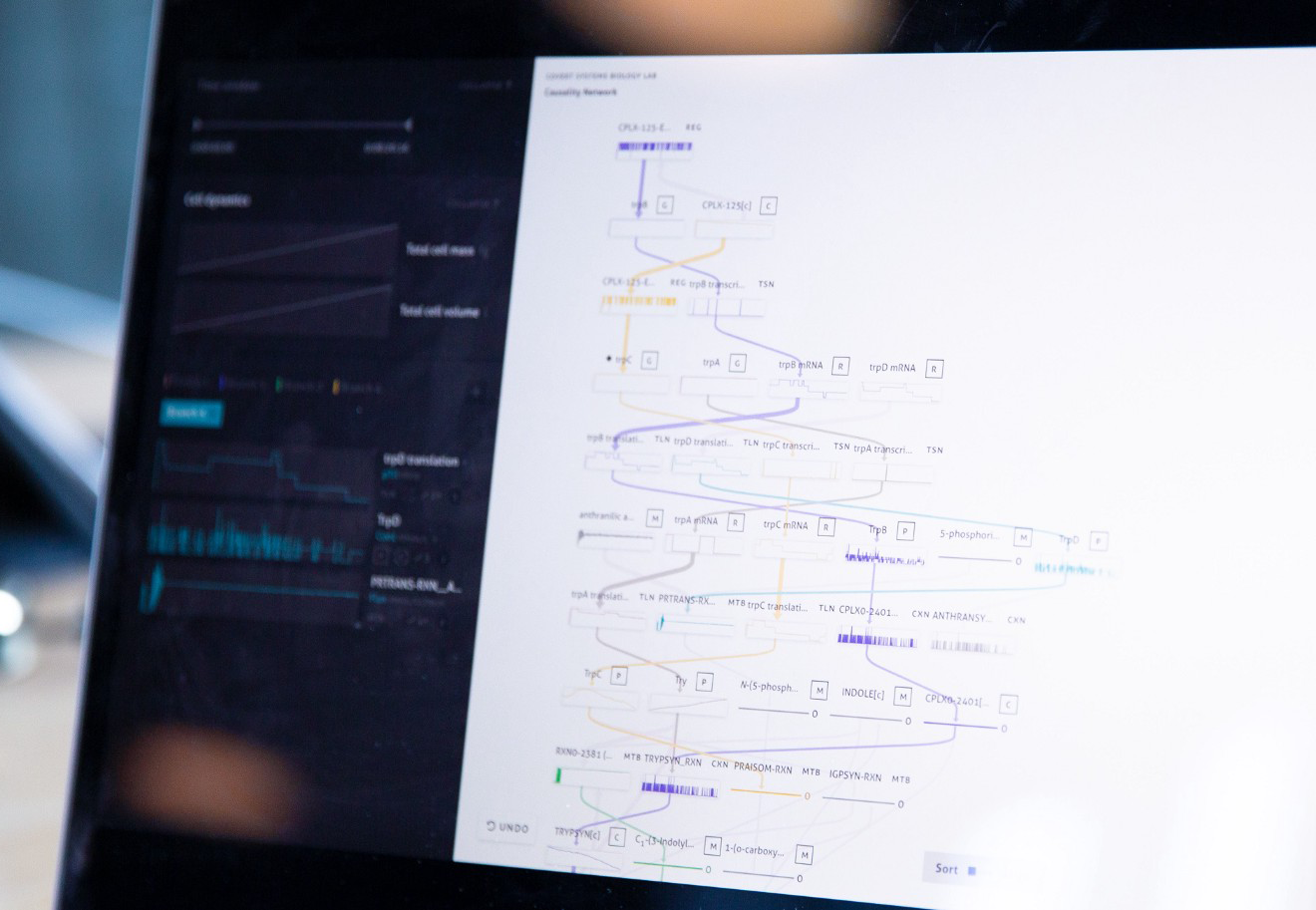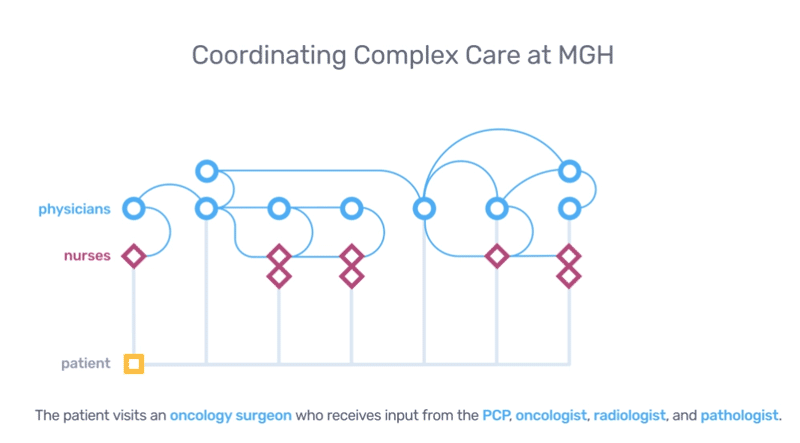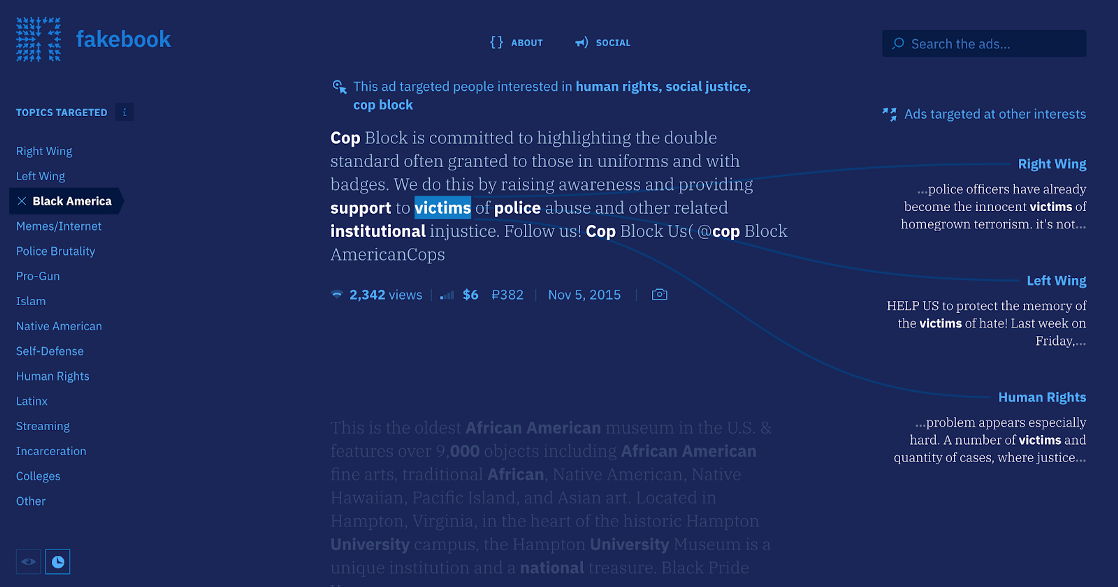

One of our favorite recent projects has been in partnership with the Markus Covert Lab at Stanford.
The Covert Lab created an unprecedented “whole-cell” model that allows researchers to run simulations of a single cell. After a few months of working with an initial application we built last fall, the Covert team came back to us with ideas about where they’d like to go next. Over the next twelve weeks, we used feedback on how they were actually using the tool to build out new ways of interacting with the information. The resulting 2.0 version of the software enables the team to identify and analyze multiple pathways throughout a network and is further tuned to their research process.

Recently, we had the opportunity to work with Dr. Timothy Ferris to visualize the inner-workings of Massachusetts General Hospital.
As CEO of the Physicians Organization, Tim Ferris has a unique perspective from which to understand the whole system—from the variety of practitioners and patient types, to how patients benefit from the collaboration of specialists. After several sessions at the whiteboard with the MGH team, we created a data-driven animation that enables others to see how groups of specialists coalesce around patients to support them at different points throughout their journey.

Over the past year, we continued to build tools to explore and understand large document archives.
Regardless of the type of archive — Facebook ads, document dumps, journal articles, or testimony transcripts — we asked ourselves the same questions: What does a map of these documents look like? How can the interface provide hints that guide new users and help them learn about the collection? How can the design engage a viewer without distracting them with the sheer quantity of information?
Ranging from prototype “sketches” to more hardened platforms, check out some of our favorite exercises in treating documents as data.




Around the studio
- We’re looking to hire a designer (or two!) Level of experience is flexible—from someone just out of school to art director
- We just kicked off a new semester of teaching information design at MIT
- And, stay tuned: we’re collaborating with the Mayo Clinic looking at electronic health records and complex patient cases
We’d love to hear what you’re working on, what you’re curious about, and what messy data problems we can help you solve. Drop us a line at hello@fathom.info, or you can subscribe to our newsletter for updates.